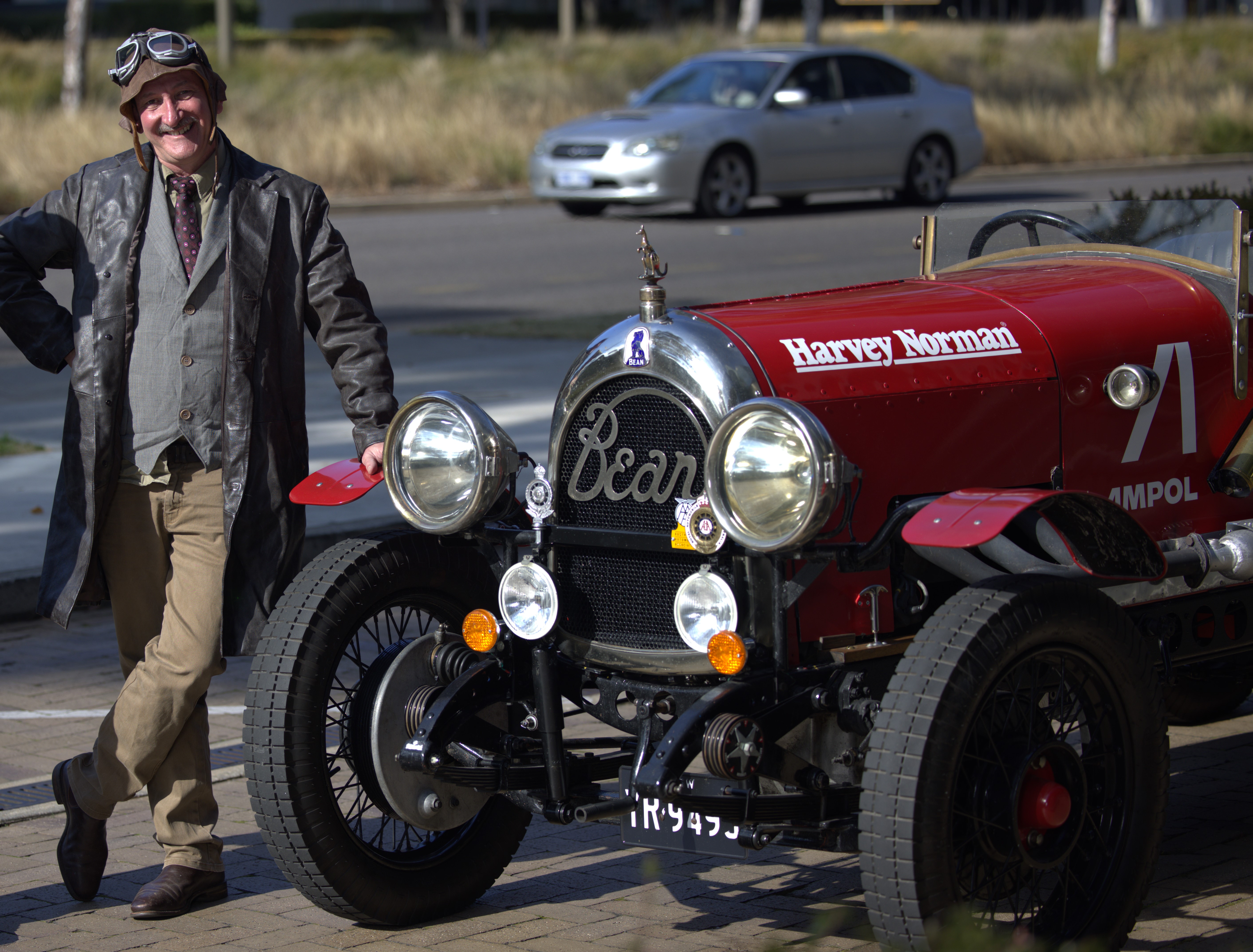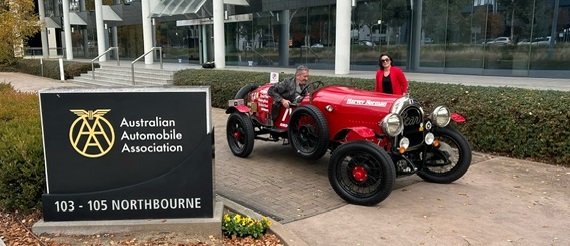
Last Friday, Australian cartoonist Warren Brown and journalist Matthew Benns left London in a 1925 vintage car, aiming to drive to Melbourne by Christmas.
They are re-enacting the 1927 journey of Australian adventurer Francis Birtles who set out from London in a 1924 Bean 14 Sundowner car, becoming the first person to drive from England to Australia.
His 26,000-kilometre journey took nine months. Much of the driving was off-road - including in mountains, deserts and jungles - and without reliable maps.
A century after Birtles' 1924 Bean was built, Brown and Benns - who both work for the Daily Telegraph - are re-enacting the journey to raise money for the Royal Flying Doctor Service.
A passport for your car
The Australian Automobile Association was pleased to provide Warren Brown and his team with crucial documents for the journey.
When Birtles arrived in Darwin in June 1928, customs officials seized the Bean and demanded payment of import duty. Only a direct intervention by Prime Minister Stanley Bruce got the adventurer off the hook, allowing him to drive on to Melbourne where an enthusiastic crowd awaited him.
Birtles could have saved himself a lot of grief by purchasing a Carnet de Passages en Douane, or CPD Carnet. This document is like a passport for a car. Many governments levy substantial charges on vehicles entering their country - unless the vehicle has a Carnet. The re-enactment teams' documents enable the Bean and its support vehicle to cross international borders without paying customs duties or import taxes.
The AAA is a member of the Fédération Internationale de l'Automobile, the global motoring association that manages CPD Carnets internationally. It works with customs authorities to facilitate CPD Carnet holders' travels throughout the world.
Licence to drive internationally
The re-enactment team also need International Driving Permits (IDPs), which enable Australian driver licence holders to legally drive in foreign countries.
These permits are recognised in 98% of countries around the world, and driving without one is illegal in many countries (unless the driver has a local licence). Many insurers won't honour claims unless the driver has an IDP.
The AAA is the only organisation authorised to issue IDPs for Australian licence holders.
When Brown visited the AAA office to ask about Carnets, he thought he had already purchased an IDP online, only to find out it was a fraudulent document.
The re-enactment team now all have legitimate IDPs.

Not quite the same
Bean was a popular UK car manufacturer in the 1920s, but it experienced financial problems and ceased production in 1931.
Few of these cars survive today. Francis Birtles' historic Bean 14 Sundowner is now in the National Museum of Australia.
The re-enactment team's 1925 Bean started out much the same as Birtles' 1924 model car, but Brown has had the engine, suspension and steering upgraded to modern standards.
Birtles did his trip alone, but Brown and Benns are joined by a support vehicle, which will carry mechanic/auto electrician Tony Jordan and videographer Stuart Duncan, who is recording the journey for a planned documentary.
The journey begins
Just as Birtles did, Brown and Benns began their journey at Australia House in The Strand in central London.
But modern geopolitical tensions mean they cannot follow Birtles' route into Iran or into Myanmar.
Instead, they will cross Europe and take a ferry from Greece to Egypt. Then they will drive past the pyramids and across Saudi Arabia to Dubai where they will take a ship to India. After driving across India, the car will be shipped to Singapore where it will be put on another ship to Darwin.
From Darwin, the team will drive to Alice Springs, across to Brisbane, and then down the east coast to Melbourne.
The journey took Birtles nine months but Brown and Benns are using an upgraded vehicle, modern roads and modern maps, and they expect to do the trip in less than three months.
The team had hoped to raise at least $100,000 for the Royal Flying Doctor Service - and they have already met that goal. At an event at the Royal Automobile Club last week, British-Australian businessman Lord Glendonbrook - who is a strong supporter of the RFDS - donated £50,000.






